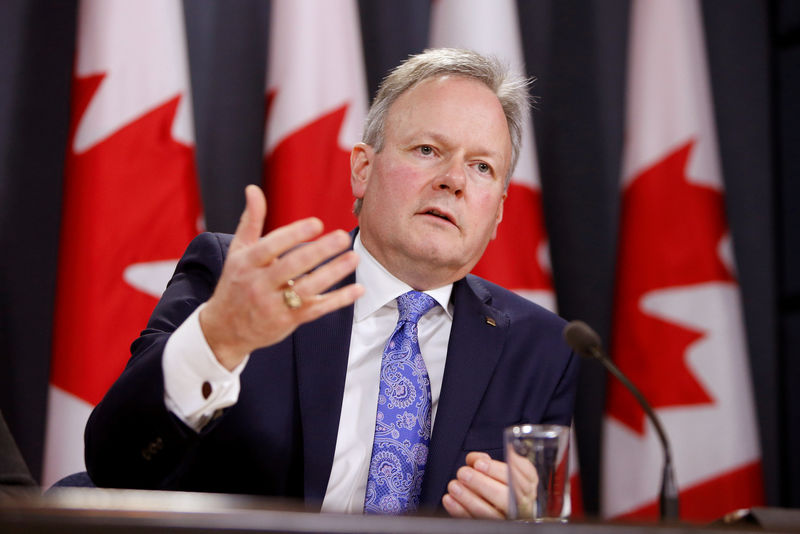By Andrea Hopkins
OTTAWA (Reuters) - The Bank of Canada struck a more confident approach to growth on Wednesday with its second rate hike in three months, pushing to the front of the pack of major central banks including the U.S. Federal Reserve.
After years of economic pain in Canada induced by slumping commodity prices, the surprise move has flipped policy divergence on its head. Just months ago, Canada lagged the U.S. economic recovery and looked like it would never keep up with the Fed's tightening cycle.
The Canadian dollar jumped more than 2 percent to a two-year high against the greenback as the bank decided to raise rates now instead of waiting until October as expected, and as policymakers struck a more hawkish tone. [L2N1LN0Z1]
The Fed is the only other major central bank in the world to raise rates this year. The Bank of Canada has distinguished itself as the only central bank willing to raise borrowing costs before inflation has even reared its head, said Shaun Osborne, chief FX strategist at Scotiabank.
"The bank's confidence in its perception of the outlook is in stark contrast to the challenges other central banks are facing with regards to policymaking," Osborne said.
All major global central banks slashed interest rates and several turned to alternative methods to stimulate their economies in the wake of the global financial crisis in 2007-2009. Few have found their way back to more normal levels of borrowing costs.
The Fed began raising rates in 2015, when Canada was cutting rates to counter a drop in oil prices. Now, Fed officials are getting more dovish in the face of weak U.S. inflation data, reducing the likelihood of a third rate hike this year. [L2N1LM1K2]
Across the Atlantic, the European Central Bank has indicated caution about withdrawing from its asset purchase program and the Bank of England is battling sluggish growth and Brexit risks. On the other side of the world, the Reserve Bank of Australia has said its stimulatory policy remains appropriate.
Canada's economy will pay a price for the rush to raise rates ahead of the pack. The lift to the Canadian dollar will make exports more expensive in the United States, the country's largest market.
"If Canada were to get far out ahead of the Fed in raising rates, that would fuel additional appreciation of the Canadian dollar and that would create new headwinds for non-commodity exports," said Bill Adams, senior international economist at PNC Financial (NYSE:PNC) in Pittsburgh.
The come-from-behind economic recovery in Canada may be partly chalked up to fiscal stimulus more easily achieved in Ottawa than in gridlocked Washington, as well as the willingness of banks to lend, said Mark Chandler, head of Canadian fixed income and currency strategy at RBC Capital Markets.
Canada also typically benefits in the later stages of a global economic recovery, as industrial production revives in other countries, spurring demand for Canada's natural resources and putting a floor under commodity prices.
"All those are good developments for a small open trading economy," said Chandler. "Typically that would be Canada's role - late in the game, we are out ahead of the pack."
